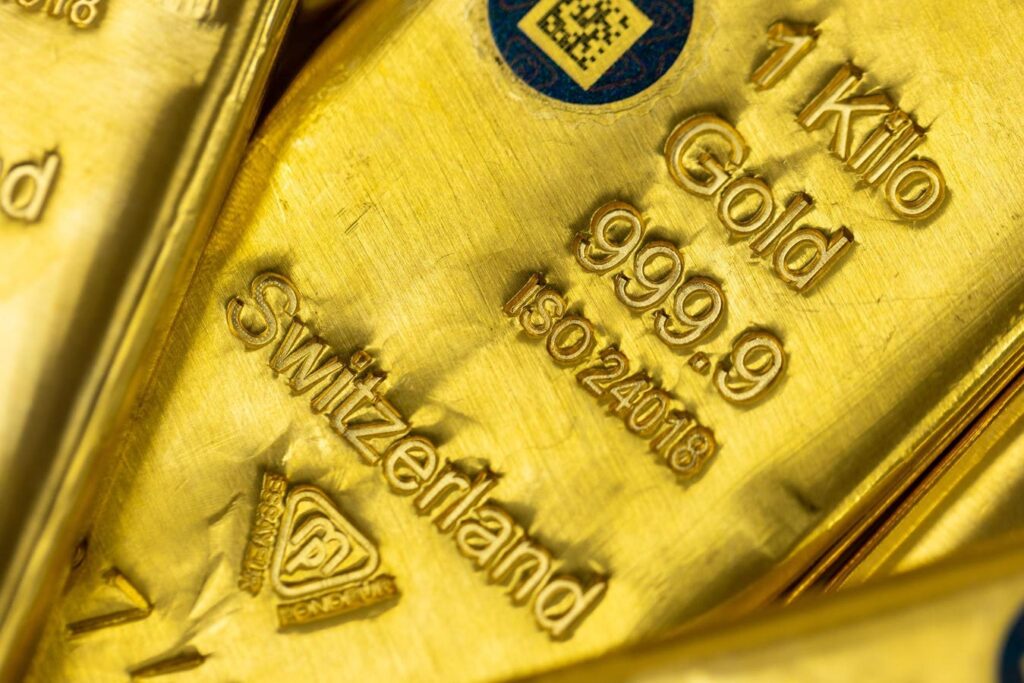Gold has always captivated investors during uncertain times, and with its recent surge to an unprecedented $3,322 per ounce, many are wondering if now is the moment to add the precious metal to their portfolios. Let’s examine gold’s investment profile and the challenges of timing this uniquely volatile asset.
Gold’s Enduring Appeal as a Safe Haven
Gold has long been hailed as the ultimate safe haven, a glittering refuge in times of economic turbulence. But how does it stack up as a long-term investment? The answer depends on how and when you look. While gold prices soared nearly 360% between 1990 and 2020, the Dow Jones Industrial Average surpassed it with a staggering 991% climb, according to data from TradingView. Yet, this is only part of the story.
Gold shines brightest during periods of market stress or inflationary spikes. From 2000 to the mid-2020s, gold investments multiplied ninefold, outpacing the S&P 500’s sixfold increase. Recent history also underscores gold’s role as a crisis barometer—it hit historic highs of $2,089 per ounce during the pandemic and surged to records again amid geopolitical tensions in 2024.
The metal’s allure as a hedge against calamity has deep historical roots. For millennia, gold has served as a store of value when currencies falter or geopolitical tensions rise. Unlike stocks or bonds, physical gold doesn’t rely on any issuer’s promise or performance. This intrinsic value becomes particularly attractive when uncertainty looms.
This flight-to-safety tendency explains why gold often moves inversely to more traditional risk assets. When equities tumble or currencies weaken, investors frequently rotate capital into gold. We’ve seen this pattern repeatedly during major crises, from the 2008 financial meltdown to pandemic-induced market turmoil, and now again as global tensions and inflation concerns mount.
The Timing Conundrum: Why Gold Defies Prediction
Despite its appeal, timing gold investments presents a formidable challenge even for seasoned investors. Unlike the stock market, which historically trends upward approximately 54% of days—giving investors better-than-coin-flip odds of being right on any given day—gold follows a dramatically different pattern.
Gold derives the bulk of its long-term returns from remarkably brief periods of explosive growth. The metal might remain stagnant or decline for extended intervals, only to deliver years’ worth of returns in concentrated bursts. This “feast or famine” return profile makes gold timing exceptionally difficult compared to equities.
The mathematics are sobering: while stocks offer relatively balanced upside/downside probabilities, gold’s return distribution is heavily skewed. Approximately 80% of gold’s total returns come from just 20% of time periods. Missing these critical windows can mean years of underperformance, while being positioned correctly during these brief surges can generate outsized profits.
This extreme concentration of returns creates a predicament. For an investor to successfully time gold markets, they must correctly identify the relatively rare inflection points when gold begins one of its dramatic ascents. Even many professional commodity traders acknowledge the difficulty of this task.
Many seasoned investors have abandoned attempts to predict gold’s short-term movements. After decades of studying commodity markets, experts widely acknowledge that forecasting when gold will enter one of its accelerated growth phases requires either extraordinary insight or extraordinary luck—usually the latter. The track record of consistent gold-timing success remains vanishingly small, even among market professionals with decades of experience.
The honest truth? When considering whether now represents an optimal buying opportunity with gold at record highs, there is no definitive answer. While some technical indicators and geopolitical factors suggest continued momentum, history teaches humility when attempting to predict gold’s next move. For every compelling argument that gold’s run has just begun, an equally convincing case can be made that the smart money has already moved.
Rather than attempting to time perfect entry points, investors might consider maintaining a modest gold allocation as portfolio insurance—acknowledging both its diversification benefits and its unpredictable return patterns. While gold deserves consideration in most diversified portfolios, chasing its record highs requires a tolerance for risk that many investors underestimate.
In the end, the best gold investment strategy may be the least exciting: systematic allocation rather than emotional reaction to headlines about record prices.
Read the full article here











